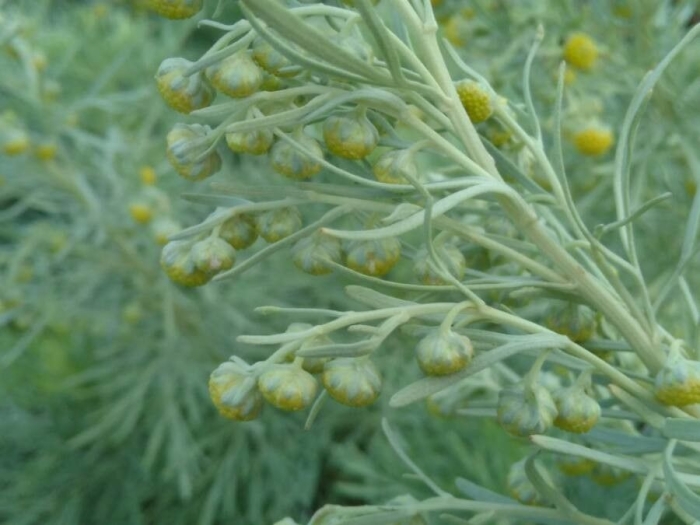Tree Wormwood
(Artemisia arborescens)
Tree Wormwood (Artemisia arborescens)
/
/

bas yves
CC BY-SA 4.0
Image By:
bas yves
Recorded By:
Copyright:
CC BY-SA 4.0
Copyright Notice:
Photo by: bas yves | License Type: CC BY-SA 4.0 | License URL: https://creativecommons.org/licenses/by-sa/4.0/ | Attribution: bas yves (cc-by-sa) | Rights Holder: bas yves | Publisher: PlantNet | Date Created: 2018-05-06T22:00Z | Title: Artemisia arborescens L.: flower | Notes: |


















































Estimated Native Range
Summary
Artemisia arborescens, commonly known as Tree Wormwood, is an evergreen shrub native to the Mediterranean region, particularly coastal areas, rocky slopes, and scrublands. It typically grows to a height and width of 4-6 feet (1.2-1.8 meters). The plant has a bushy habit with woody stems and bears masses of finely-divided, aromatic, silvery-white leaves. In spring, it produces single-sided sprays of yellow daisy-like flowers that are modest in showiness but add to the plant’s overall texture and interest.
Tree Wormwood is valued for its aromatic foliage and its ability to thrive in poor, dry soils, making it an excellent choice for xeriscaping and Mediterranean gardens. It is often used as a border plant, for mass planting, or as an accent in rock gardens. Artemisia arborescens requires full sun and well-drained soil, and it is drought-tolerant once established. While generally low-maintenance, it may need protection from harsh winter conditions in colder climates. It is also used in traditional medicine and as a culinary herb in some cultures, although it should be used with caution due to its potent essential oils. Potential problems include root rot in poorly drained soils and susceptibility to aphids and whiteflies.CC BY-SA 4.0
Tree Wormwood is valued for its aromatic foliage and its ability to thrive in poor, dry soils, making it an excellent choice for xeriscaping and Mediterranean gardens. It is often used as a border plant, for mass planting, or as an accent in rock gardens. Artemisia arborescens requires full sun and well-drained soil, and it is drought-tolerant once established. While generally low-maintenance, it may need protection from harsh winter conditions in colder climates. It is also used in traditional medicine and as a culinary herb in some cultures, although it should be used with caution due to its potent essential oils. Potential problems include root rot in poorly drained soils and susceptibility to aphids and whiteflies.CC BY-SA 4.0
Plant Description
- Plant Type: Shrub
- Height: 4-6 feet
- Width: 4-6 feet
- Growth Rate: Rapid
- Flower Color: N/A
- Flowering Season: Spring
- Leaf Retention: Evergreen
Growth Requirements
- Sun: Full Sun
- Water: Low
- Drainage: Fast
Common Uses
Bank Stabilization, Bee Garden, Bird Garden, Border Plant, Butterfly Garden, Deer Resistant, Drought Tolerant, Fragrant, Low Maintenance, Potted Plant, Rabbit Resistant, Salt Tolerant, Street Planting
Natural Habitat
Native to coastal areas, rocky slopes, and scrublands in the Mediterranean region
Other Names
Common Names: Shrubby Mugwort , Strauch-Beifuß
Scientific Names: Artemisia arborescens , Artemisia argentea , Absinthium arborescens , Absinthium argenteum , Artemisia arborescens f. arborescens , Artemisia arborescens var. arborescens , Artemisia elegans
GBIF Accepted Name: Artemisia arborescens L.